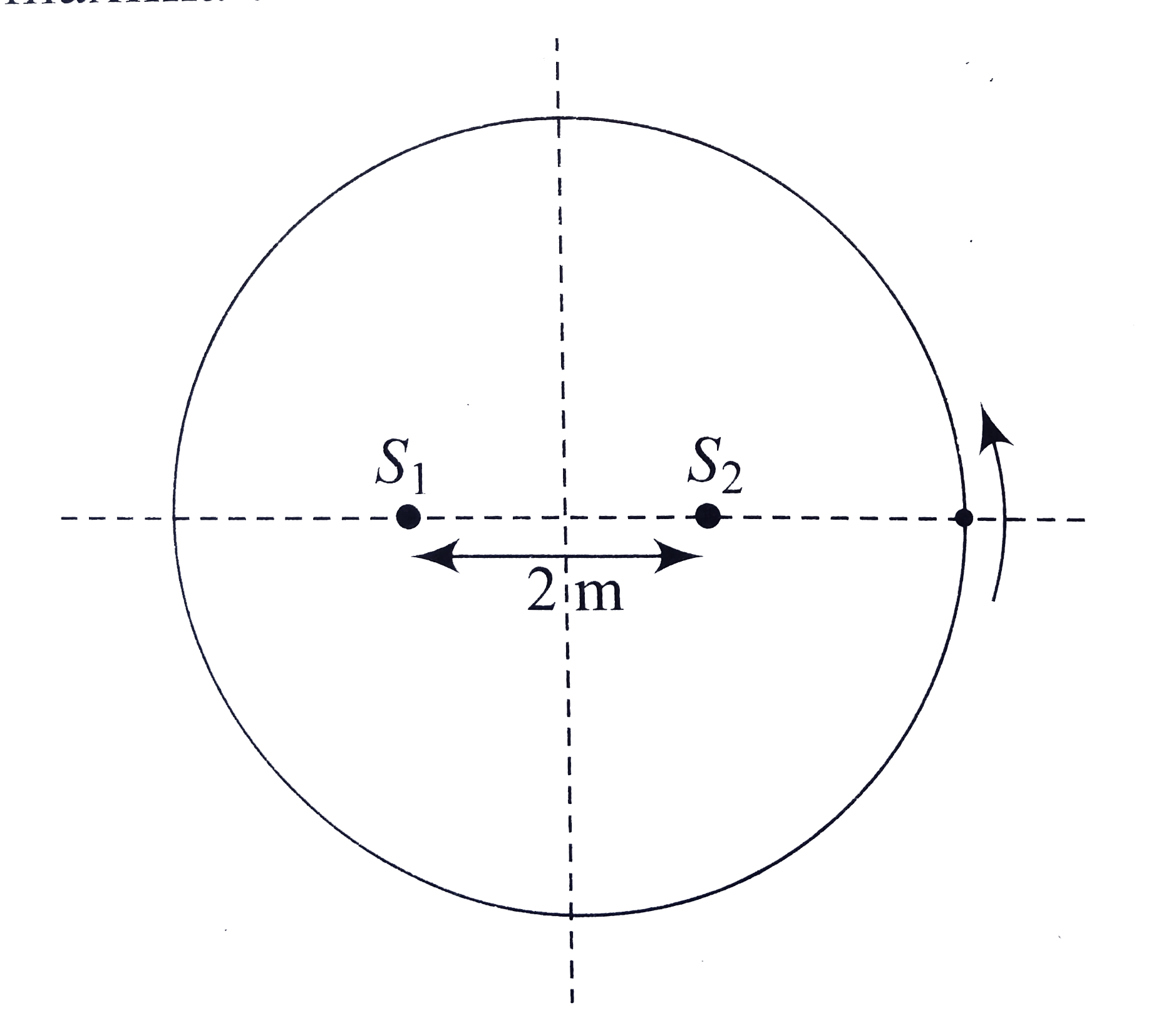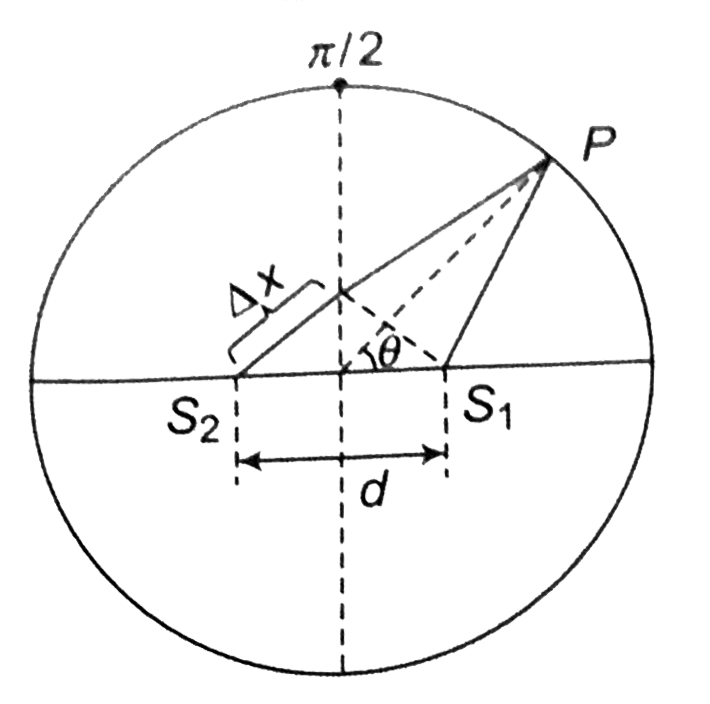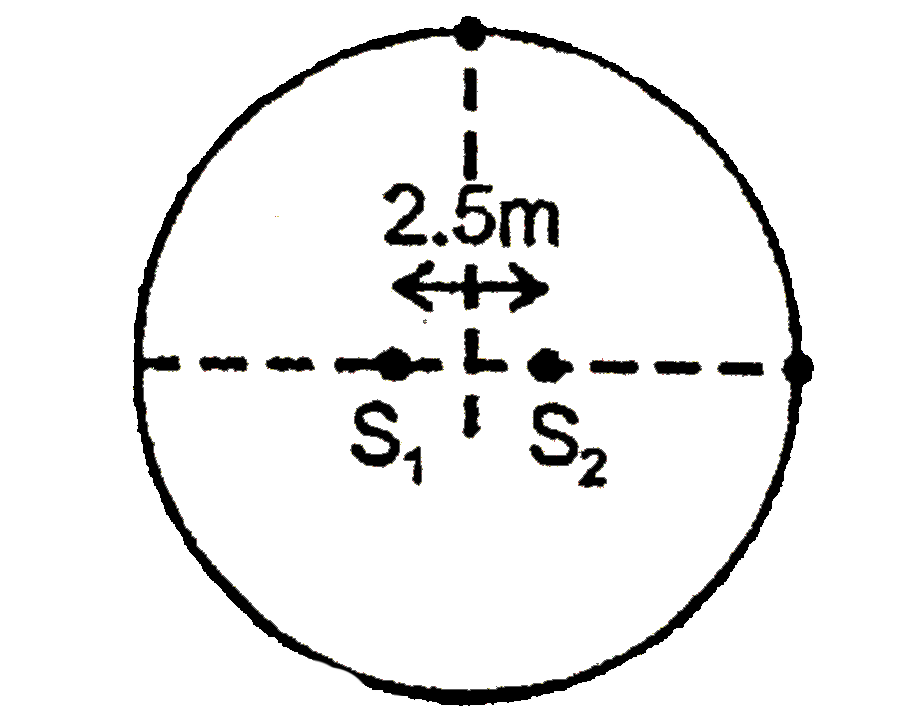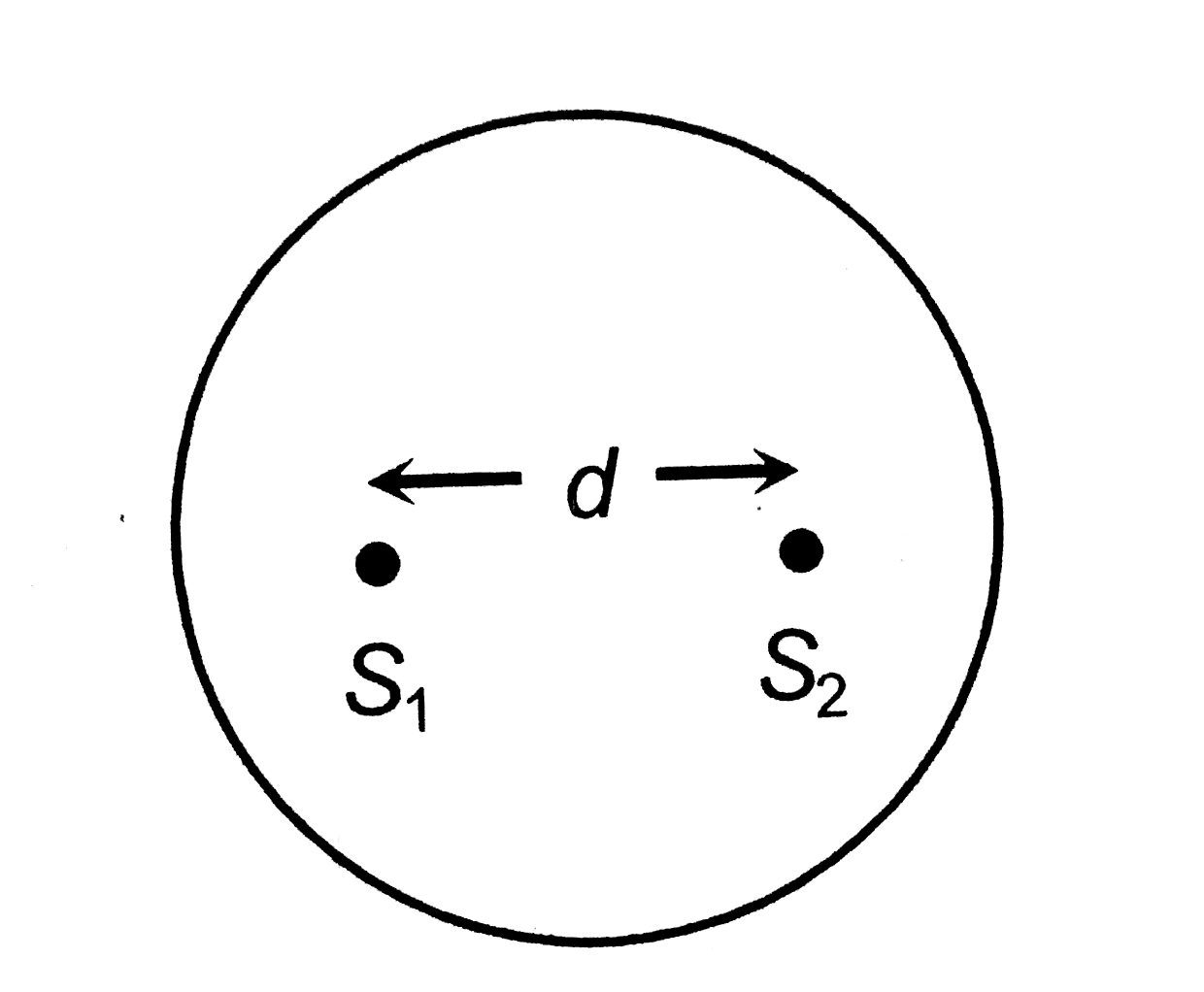Two point sources separated by 2.0 m are radiating in phase with λ=0.50m. A detector moves in a circular path around the two sources in a plane containing them. How many maxima are detected?

16
20
24
32
The correct Answer is:a
Condition for maxima is
dsinθ=nλ
sinθ=nλd=n(0.502.0)=0.25n
A sinθ lies between -1 and 1, so we wish to find all values of n for which
|0.25n|≤1
These value are -4, -3, -2, -1, 0, +1, +2, +3, +4. For each of these, there are two different values of theta except for -4 and +4 A single value of θ,−90∘ and +90∘, is associated with n=−4 and n=+4, respectively. Thus, there are 16 different angles in all and therefore 16 maxima.

Topper's Solved these Questions
- BOOK - CENGAGE PHYSICSCHAPTER - WAVE OPTICSEXERCISE - Multiple Correct8videos
WAVE OPTICS
- BOOK - CENGAGE PHYSICSCHAPTER - WAVE OPTICSEXERCISE - Assertion- Reasoning13videos
WAVE OPTICS
- BOOK - CENGAGE PHYSICSCHAPTER - WAVE OPTICSEXERCISE - Subjective11videos
WAVE OPTICS
- BOOK - CENGAGE PHYSICSCHAPTER - THERMODYNAMICSEXERCISE - QUESTION BANK34videos
THERMODYNAMICS
- BOOK - CENGAGE PHYSICSCHAPTER - WAVESEXERCISE - QUESTION BANK38videos
WAVES
Similar Questions
Two coherent radio-frequency point sources separated by 2.0m are radiating in phase with λ=0.50m. A detector moves in a circuit of large radius around the two sources in a plane containing them as shown in figure. Find (a) the angular position of interference maxima for 0≤θ≤90∘ and (b) number of maximum in the range (−π2)≤θ≤π2 and in one complete rotation.
 View Solution
View Solution
In Figure, two radio- frequency point sources S1 and S2 separated by distance d = 1.8 m, are radiating in phase with λ=0.50m. A detector moves in a large circular path around the two sources in a plane contain- ing them. How many (a) maxima and (b) minima does it detect?View Solution
Knowledge Check
- Question 1 - Select One
Two radio frequency sources S1 and S2, separated by distance 2.5 m emitting in phase waves of wavelength 1m. A detector moves in a large circular path around the two sources in a plane containing them. The number of maxima that will be detected by it over the complete circular path. are
 A16B12C10D8
A16B12C10D8 - Question 2 - Select One
Two coherent sources separated by distance d are radiating in phase having wavelength λ. A detector moves in a big circle around the two sources in the plane of the two sources. The angular position of n=4 interference maxima is given as
 Asin−1(nλ)dBcos−1(4λd)Ctan−1(d)4λDcos−1(λ)4d
Asin−1(nλ)dBcos−1(4λd)Ctan−1(d)4λDcos−1(λ)4d - Question 3 - Select One
_E01_036_Q01.png)
Two point source separated by d=5μm emit light of wavelength λ=2μm in phase A cicular wire of radius 20μm is placed aournd the source as shown in figure.APoints A and B are dark and points C and D are bright.BPoint A and B are bright and point C and D are darkCPoint A and C are dark and points B and D are bright.DPoints A and C are bright and points B and D are dark.
Two coherent radio point sources that are separated by 2.0 m are radiating in phase with a wavelength of 0.25m. If a detector moves in a large circle around their mid-point. At how many points will the detector show a maximum signal?
View SolutionTwo point source separated by d=5μm emit light of wavelength λ=2μm in phase. A circular wire of radius 20μm is placed around the source as shown in figure. Which point are dark and bright.
 View Solution
View SolutionAn inteference is observed due to two coherent sources A and B separated by a distance 4λ along Y-axis, where λ is the wavelength of light. A detector 'D' is moved alog the positive X-axis. Find the totla number of maxima observe on the X-axis excluding the points x=0 and x=∞ ?
 View Solution
View SolutionTwo monochromatic (wavelength = a/5) and coherent sources of electromagnetic waves are placed on the x-axis at the points (2a,0) and (-a,0). A detector moves in a circle of radius R(gtgt2a) whose centre is at the origin. The number of maxima detected during one circular revolution by the detector are
View SolutionTwo monochromatic (wavelength =a/5) and coherent sources of electromagnetic waves are placed on the x-axis at the point (2a,0) and (−a,0). A detector moves in a circle of radius R(>>2a) whose centre is at te origin. The number of maximas detected during one circular revolution by the deterctor are -
View Solution

